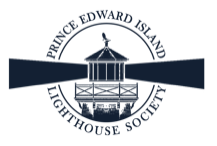Glossary of Lighthouse Terms
Aid to Navigation: A buoy, beacon, lighthouse, lightship or any other structure or device installed, built or maintained for the purpose of assisting the navigation of vessels.
Alternative Use: The non-navigational use of an authentic lighthouse to preserve and generate support for the historic structure. This can also take place in a lighthouse that is still used for navigational purposes.
Automated: A lighthouse that has been changed to operate without the aid of a keeper. A keeper may still be retained for maintenance and security.
Characteristic: The unique visual identity of a lighthouse, including the light exhibited and structural features, which allows mariners to tell one lighthouse from another.
Chariot: The wheeled carriage at the bottom of a Fresnel lens assembly that allows the lens to rotate around a circular iron track atop the lens pedestal.
Crib: A structure, usually of timbers sunk in water through filling with stone, that served as the foundation for a structure built atop it.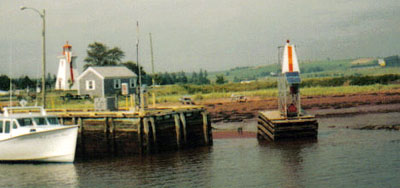
Daymark: Unique colour, pattern or architecture of towers and other markers to help navigators identify their location during the day.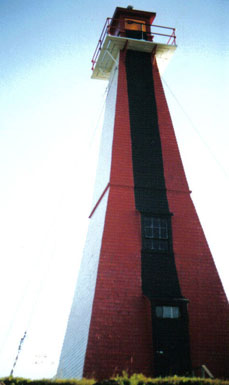
Decommissioned: A lighthouse that no longer functions as a navigational aid.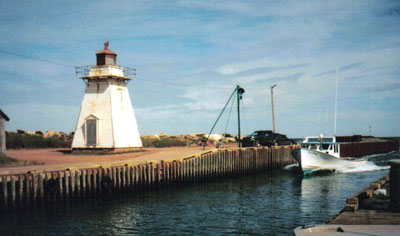
De-staffed: An automated lighthouse without a lightkeeper.
Focal Plane: The height above the water level at which the centre of the light emanates.
Interim Lightkeeper: A lightkeeper who served on a temporary basis, usually between the appointments of full-time lightkeepers.
Lighthouse: Enclosed tower with an enclosed lantern built by a governing authority as an aid to navigation.
Lightstation: Light tower and associated buildings (dwellings, sheds, boathouses, and fog alarms) and the land they occupy.
List Of Lights (LOL): Official government list of navigational aids along the coasts and inland waterways featuring brief descriptions and precise locations
Styles of Lighthouses
Concrete Hexagonal: Six-sided tapering concrete tower. The current Shipwreck Point Lighthouse is an example.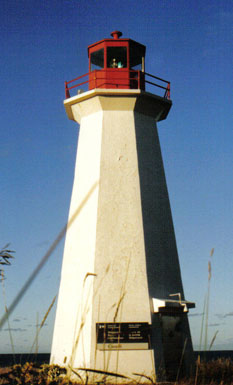
Cupola Style: A structure with the lantern rising from the centre of the dwelling. This style was used for the former lighthouses at Shipwreck Point, Cape Tryon and the Georgetown Front Range Light.
Lightship: A vessel that acts as a lighthouse anchored off shore at a location unsuitable for a lighthouse. The Atlantic region’s last lightship was replaced by a buoy in 1969.
Masonry: A lighthouse built of brick or stone, sometimes hidden by shingle cladding. Examples include Point Prim Lighthouse, PEI, and Sambro Island Lighthouse, Nova Scotia.
Pepper Pot/Salt Shaker: A popular term for the smaller square tapered lighthouse style. Roughly resembles the proportions of a salt or pepper shaker.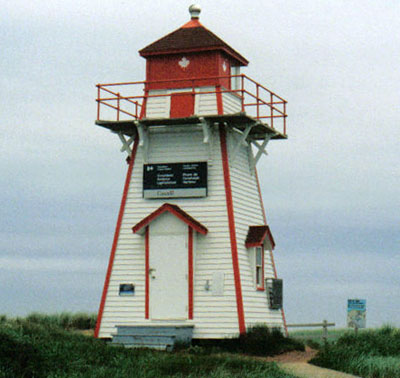
Skeleton Tower: An open metal tower not generally considered a heritage structure.
Square Tapered: Four-sided structure of varying height, almost exclusively made of wood in the Maritimes.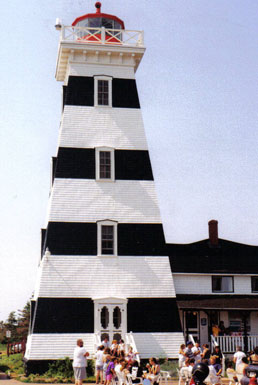
Tapered: Sloped walls that are a feature of most lighthouses. The tapered shape provides strength and stability and lessens wind resistance.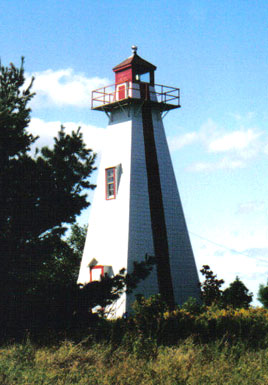
Wood Octagonal: Eight-sided wooden structure that is usually tapered.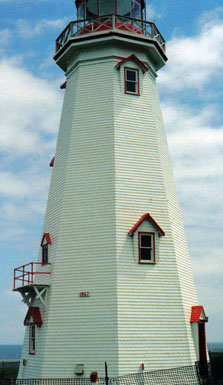
Lighthouse Anatomy
Cornice: Ornamental overhang often found on lighthouses as a decorative treatment below the lantern or gallery deck.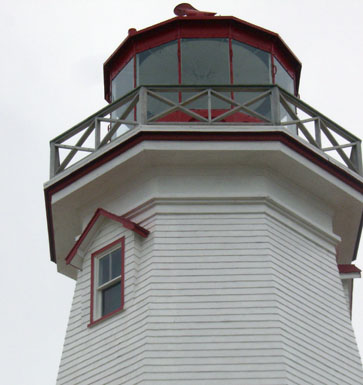
Gallery: Exterior railed walkway encircling the lantern or watch room. Also known as the lantern deck.
Lamp: The lighting apparatus inside the lens (i.e. oil lamp, kerosene vapour burner, or electric light bulb).
Lantern: The room at the top of the lighthouse that houses the lens.
Lens: Any glass or transparent material that is shaped to concentrate, magnify and focus light.
Smoke Jack/Smoke Head: A special stack on top of older lanterns used to vent smoke from the lamps, sometimes taking the form of a round ball or a chimney with a metal vane.
Lighthouse Technology
Catoptric: A light that uses a concave mirror for magnification.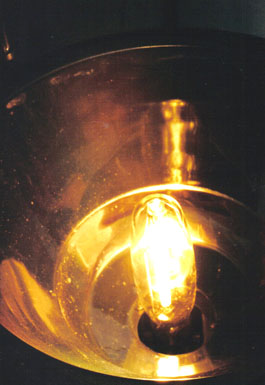
Diaphone: A powerful type of foghorn invented in Canada which produced a loud “blast” followed by a “grunt”. It used compressed air generated by a steam, gas or oil engine.
Dioptric: A light that uses a lens, such as a Fresnel lens, for magnification.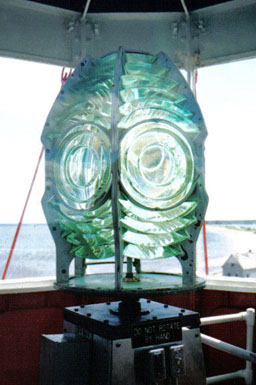
Drum Lens: A common variation of the Fresnel lens with the form of an open cylinder or “drum”, rather than a central bulls-eye.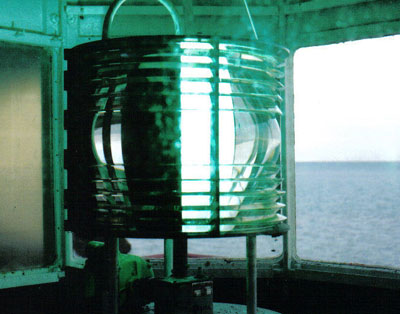
Fog Signal: Any type of audible device used to warn mariners away from obstacles during periods of heavy fog. Bells, whistles and horns could be manually operated or power-driven.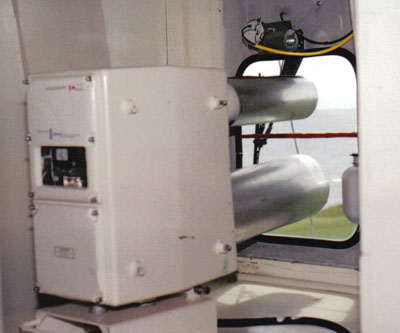
Fresnel Lens: The lens invented by Augustin Fresnel in 1821 that consists of concentric ridges radiating outward from a central bulls-eye. Prisms positioned at the top and bottom of the ridges refract the light from the light source placed behind the central lens. A term normally used only when referring to traditional cut glass style lenses, although the Fresnel principle is also found in more modern glass or plastic lenses.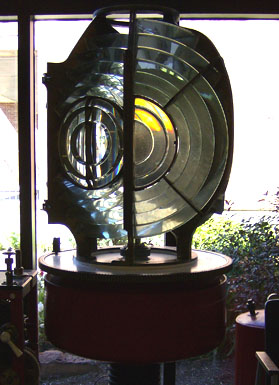
GPS: Global Positioning System. A GPS receiver triangulates satellite transmissions to calculate position on the earth.
Order: A measurement of the size of a Fresnel lens, with 1st order being the most powerful (and largest) and 7th order being the least powerful (and smallest):
7th, 6th and 5th order: Small harbour and inland lights. Example: Warren Cove, PEI.
4th and 3rd order: Lesser coastal lighthouses. Example: Wood Islands, PEI.
2nd order: Major coastal lighthouses. Example: Seal Island, NS.
1st order: Large landfall lighthouses. Example: Sambro Island, NS
Hyper radial: Extra large size for continental landfall lights. Example: Cape Race, NL
Light Characteristics
Fixed: A continuous steady light.
Flashing: A light that appears at regular intervals with the light period being shorter than the period of darkness, or eclipse.
Group Flashing: A flashing light that combines flashes in groups of two or more, creating its own unique pattern or signal. Used to avoid confusion where several lighthouses are in close proximity.
Occulting: A light that appears at regular intervals briefly interrupted by periods of darkness that are shorter than the periods of light.
Types of Lighthouses
Coastal Light: A medium sized lighthouse marking major coastal features such as capes, points and major islands.
Harbour Light: A small lighthouse used to assist navigation within a harbour. Sometimes located on wharves or piers in which case they are known as wharf or pier lights.
Hazard Avoidance Light: A lighthouse used to mark a specific hazard such as a shoal, reef, rocky point or dangerous island. Many lighthouses serve as both coastal and hazard avoidance lights.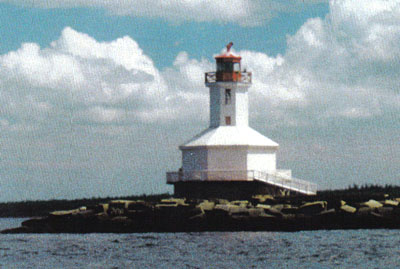
Leading Light: A lighthouse used as a landmark when fixing a course along a waterway. More commonly found as inland lights. There are no leading lights on PEI.
Landfall Light: A large lighthouse first sighted as a mariner nears land.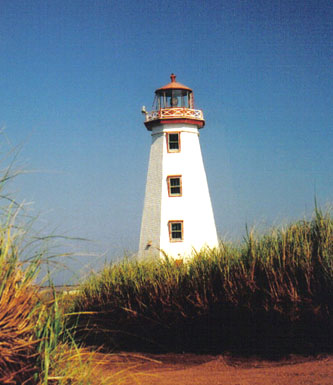
Range Lights: A pair of lighthouses that indicate a safe course when their lights are lined up one above the other.
Sector Light: A lighthouse that indicates safe passage by a change in light colour when the mariner moves off course.
Organizations
ALC: Atlantic Lighthouse Council. An umbrella group of partners concerned with lighthouse preservation and development in the Maritime region.
CCG: Canadian Coast Guard. The agency traditionally responsible for the management of lighthouses and other aids to navigation. It is now a part of the Department of Fisheries and Oceans.
Department of Marine: Actually the Department of Marine and Fisheries although frequently referred to as the Department of Marine. It began in 1873 and became the CCG in the 1930’s
DFO: Department of Fisheries and Oceans. The federal department responsible for fisheries and aids to navigation.
FHBRO: Federal Heritage Building Review Office. The agency that evaluates heritage buildings owned by the federal government, which includes most lighthouses.
IALA: International Association of Lighthouse Authorities. An organization of governing bodies responsible for lighthouses in countries throughout the world.
LSNL: Lighthouse Society of Newfoundland and Labrador.
NBLHS: New Brunswick Lighthouse Society.
NSLPS: Nova Scotia Lighthouse Preservation Society.
PEILS: Prince Edward Island Lighthouse Society.
RPAM: Real Property and Asset Management. The branch of DFO that currently manages lighthouse properties and oversees disposal.
